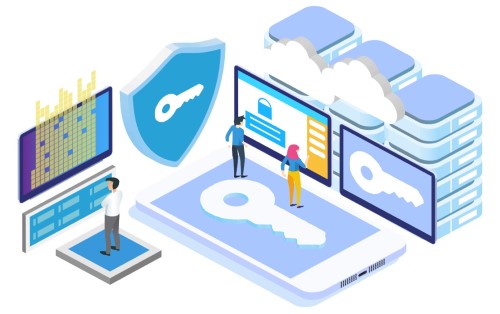How the Government Should Manage Natural Disasters
April 3, 2025
 How the Government Should Manage Natural Disasters
How the Government Should Manage Natural Disasters
Natural disasters are a difficult reality. Regardless of our beliefs, these disasters such as earthquakes and floods have a huge impact on our lives in every part of the world. Every year, people all over the world face several disasters. The lives of many of these people are completely destroyed as a result of these…
 What is Disaster Recovery Plan ?
What is Disaster Recovery Plan ?
Imagine that you are running a small scale organization and have been in business for over five years. You have managed to streamline all processes online including purchasing, payroll, invoicing and accounting etc. It is quite likely that you will not have paid any thought to taking backup of your data on systems. Even if…
 Recovery Time Objective and Recovery Point Objective
Recovery Time Objective and Recovery Point Objective
The concept of insurance came about in the business field to cover the risk of loss of assets due to natural and manmade disasters as well as other calamities. In the current times, Organizations especially those which are dependant heavily on IT systems have begun to look at preventive steps as well as plan for…
IT systems are the most sensitive systems that are prone to failure and disaster. The risks that can cause breakdown of the systems and loss of data are many.
As the data is something that is very important for the existence and continuity of the business, every Organization needs to have a proper Disaster Recovery plan in place.
Normally the non IT Organizations do not pay too much of importance to maintaining a good IT system in place. The management of the network, backup and the entire system is entirely dependent upon the IT staff.
However in IT and technology companies, the systems are managed professionally by skilled staff. Therefore paying attention to and learning how to manage the IT systems and backup programs on daily basis becomes essential for non IT companies.
Apart from having recovery plans in place, it is important to organize and manage the IT department in a systematic way, by ensuring that the hardware is installed and maintained in a dust free atmosphere with temperature control and stable power supply through UPS system that can manage and control the spikes and prevent damage to the systems.
The access to the department and systems should be strictly controlled and unauthorized entry banned.
In the context of softwares, the system should be guarded against virus attacks and other similar situations that are likely to paralyze the systems.
Therefore designing the network and controlling direct access to internet from individual PCs as well as installing fire walls and antivirus systems is very important.
Apart from installing the antivirus softwares, it is required that periodic updates are installed and the systems are scanned at regular intervals. Any use of external devices like disk drives or Sticks etc from outside sources should be completely avoided and if permitted, should be subject to scanning for virus.

In current setup, it is imperative for Organizations to have a good IT backup system in place to prevent any loss of data.
Depending upon the data and volume to be backed up suitable backup solution can be put in place either by using tape drives or storing backup data at a remote location etc.
Frequency of taking the backup at a particular time period for each department would need to be determined and responsibility for backup fixed.
It is not enough to just take the backup on a tape drive or other such device. It is also important to store the backup devices in a proper manner with identifiable labels so that the date wise backup can be retrieved easily.
The physical condition of storage as well as the method of storage play an important part in the data security plan.
Apart from storage of backup data, there has got to be a plan to periodically access the backup data and review the data to ensure that it is retrievable and usable.
The logic of storing the backup, the plan and schedule for checking the backed up data and the authority responsible for checking the same should become a part of the detailed data recovery plan in the DR Plan.
Along with working on a detailed backup plan for the data, it is also important to ensure that the critical hardware spares are maintained at site by the vendor so that in case of hardware failure, the same can be set right immediately.
It is better to get commitment from the vendor for onsite support and offsite support with clear timelines established for spares and replacements to be effected and for resumption of the system.
Ensuring that all hardware is covered under warranty and regularly serviced and softwares including the anti-virus and other protective mechanisms are updated regularly is imperative.
A good organized system and setup will go a long way in preventing disasters and thus helps in managing risks to IT systems.
Your email address will not be published. Required fields are marked *